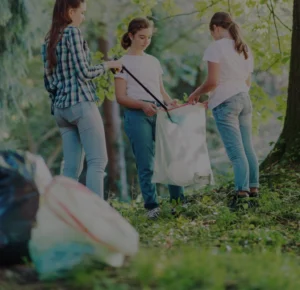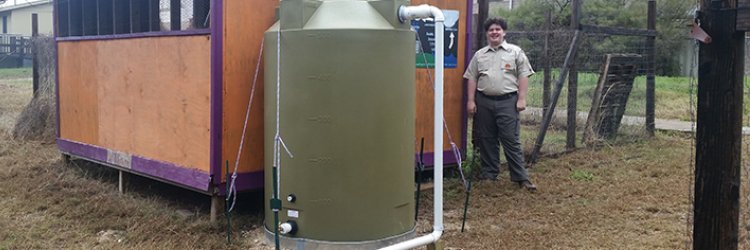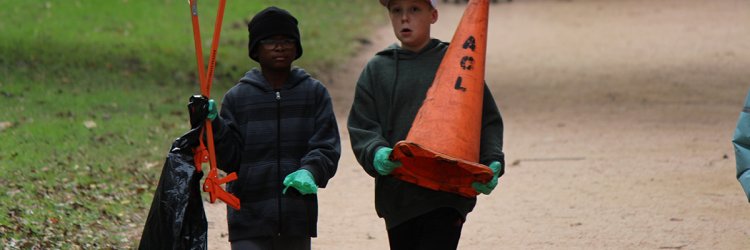The 2017-2018 school year has kicked off this week for students across Austin ISD. That means fresh school supplies, new students, and more opportunities for hands-on learning! At Keep Austin Beautiful, we are especially jazzed about one of the newest policies going into effect this school year: commercial composting for every middle and high school in the district. While this has already been in place at AISD elementary schools, this school year marks the first opportunity for district-wide commercial composting at its secondary schools.
This is not only helpful for students to rethink their food, but also will help the city along the goal of 90 percent waste diverted from landfills by 2040. With food being diverted from the trash and instead put to use as future plant food, we are helping our planet and our city by keeping it sustainable and beautiful!
So, what is commercial composting, and how is it different than a pile in your backyard? First let’s start with composting itself: at the most basic terms, food is turned into nutrient-rich soil by decomposers. The hotter in temperature a compost pile gets, the more variety of decomposers can inhabit it, the more variety of food can be decomposed in that pile. A backyard compost pile can handle a moderate variety of food- any vegetables, fruits, eggshells, grains. However, the pile does not get hot enough for decomposers to break down meats, cheese, and oils safely. For that, we need a bigger pile and hotter temperature- a commercial compost pile.
Commercial composting is where ANY kind of food can be added in, mixed with organic brown matter (dead leaves, other yard trimmings, newspaper) in a huge pile and allowed to heat up. Because of its size, this pile can get very hot – upwards of 140 degrees Fahrenheit! This heat is created by the variety of decomposers that inhabit the pile, breaking the food down into its nutrients over time, and killing any harmful pathogens that might be present. The piles are regularly turned over to introduce oxygen which increases decomposition rate. Once the piles are done “cooking,” the compost is done and ready to be used as nutrient-rich fertilizer for plants.
So why does all of this matter? All of the food waste from school cafeterias can now be diverted from the landfill, put into a compost pile, and allows for its nutrients to be used again! This means that while students are fueling their bodies today, anything left over is also fueling city-wide goals to become a more sustainable community for tomorrow.
Learn more and register for Keep Austin Beautiful educational programming.
Learn more about composting in Austin.





